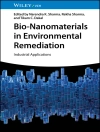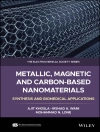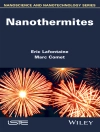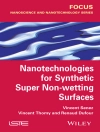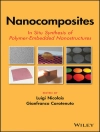To develop innovations in quantum engineering and nanosystems,
designers need to adopt the expertise that has been developed in
research laboratories. This requires a thorough understanding of the
experimental measurement techniques and theoretical models, based on
the principles of quantum mechanics.
This book presents experimental methods enabling the development and
characterization of materials at the nanometer scale, based on practical
engineering cases, such as 5G and the interference of polarized light
when applied for electromagnetic waves. Using the example of
electromechanical, multi-physical coupling in piezoelectric systems,
smart materials technology is discussed, with an emphasis on scale
reduction and mechanical engineering applications.
Statistical analysis
methods are presented in terms of their usefulness in systems
engineering for experimentation, characterization or design, since safety
factors and the most advanced reliability calculation techniques are
included from the outset.
This book provides valuable support for teachers and researchers but is
also intended for engineering students, working engineers and Master s
students.
قائمة المحتويات
Preface ix
Introduction xiii
Chapter 1 Nanometer Scale 1
1.1 Introduction 1
1.2 Sample elaboration 6
1.2.1 Physical and chemical method: spin coating 9
1.2.2 Physical method: cathode sputtering 12
1.2.3 Physical method: laser ablation 14
1.3 Characterization of samples 20
1.3.1 Scanning electron microscope 26
1.3.2 Atomic force microscope 30
1.3.3 Infrared spectroscopy (FTIR/ATR) 33
1.4 Conclusion 45
1.5 Appendix: light ray propagation 46
Chapter 2 Statistical Tools to Reduce the Effect of Design Uncertainties 51
2.1 Introduction 51
2.2 Review of fundamental definitions in probability theory 52
2.2.1 Definitions and properties 52
2.2.2 Random variables 54
2.2.3 Random vectors 55
2.2.4 Static moments 56
2.2.5 Normal probability functions 60
2.2.6 Uniform probability function 61
2.3 Random process and random field 62
2.4 Mathematical formulation of the model 64
2.5 Reliability-based approach 65
2.5.1 Monte Carlo method 65
2.5.2 Perturbation method 66
2.5.3 Polynomial chaos method 70
2.6 Design of experiments method 71
2.6.1 Principle 71
2.6.2 Taguchi method 72
2.7 Set-based approach 76
2.7.1 The interval method 77
2.7.2 Fuzzy logic-based method 79
2.8 Analysis in terms of main components 82
2.8.1 Description of the approach 82
2.8.2 Mathematical basis 83
2.8.3 Interpretation of results 84
2.9 Applications 84
2.9.1 Rod mesh 84
2.9.2 Example of a linear oscillator 88
2.10 Conclusion 90
Chapter 3 Electromagnetic Waves and Their Applications 91
3.1 Introduction 91
3.2 Characteristics of the energy carried by an electromagnetic wave 94
3.3 The energy of a plane monochromatic electromagnetic wave 98
3.3.1 Answer to question 1 99
3.3.2 Answer to question 2 100
3.3.3 Answer to question 3 100
3.3.4 Answer to question 4 101
3.3.5 Answer to question 5 101
3.3.6 Answer to question 6 103
3.4 Rectangular waveguide as a high-pass frequency filter 103
3.4.1 Answer to question 1 105
3.4.2 Answer to question 2 107
3.4.3 Answer to question 3 108
3.4.4 Answer to question 4 108
3.4.5 Answer to question 5 109
3.4.6 Answer to question 6 110
3.4.7 Answer to question 7 111
3.4.8 Answer to question 8 111
3.4.9 Answer to question 9 111
3.4.10 Answer to question 10 112
3.4.11 Answer to question 11 112
3.4.12 Answer to question 12 112
3.4.13 Answer to question 13 113
3.4.14 Answer to question 14 113
3.4.15 Answer to question 15 114
3.5 Characteristics of microwave antennas 114
3.5.1 Introduction to antennas 115
3.5.2 Radiation of a wire antenna 122
3.6 Characteristics of networks of microwave antennas 134
3.6.1 Introduction to networks of microwave antennas 134
3.6.2 Radiation of antenna networks 137
Chapter 4 Smart Materials 147
4.1 Introduction 147
4.2 Smart systems and materials 150
4.3 Thermodynamics of couplings in active materials 158
4.3.1 Thermo-mechanical and thermoelastic coupling 158
4.3.2 Multiphysics couplings 172
4.4 Exercises on the application of active materials 184
4.4.1 Strain tensor for 2D thin films 184
4.4.2 A piezoelectric accelerometer 190
4.4.3 Piezoelectric transducer 193
4.4.4 Piezoelectric sensor 198
4.5 Appendix: crystal symmetry 202
Appendix 205
References 211
Index 217
عن المؤلف
Pierre Richard Dahoo is Professor and Holder of the Chair of Materials
Simulation and Engineering at the University of Versailles Saint-Quentin
in France. He is Director of Institut des Sciences et Techniques des
Yvelines and a specialist in modeling and spectroscopy at the LATMOS
laboratory of the CNRS.
Philippe Pougnet is a former expert in reliability and the technologyproduct-process of embedded mechatronic systems. He graduated from
Universite Grenoble Alpes and Grenoble INP in France.
Abdelkhalak El Hami is Professor at the Institut National des Sciences
Appliquees (INSA-Rouen Normandie) in France and is in charge of the
Normandy Conservatoire National des Arts et Metiers (CNAM) Chair of
Mechanics, as well as several European pedagogical projects.





